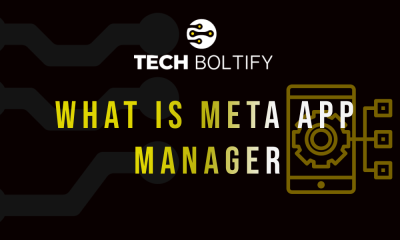Tech
Email Delivery Failure: 10 Common Causes and How to Fix Them
Modern business communication is based on email. Every day, there are over 360 billion emails sent across the world. Some email delivery failures will surely occur with that volume. Diagnosing and solving the root causes may be frustrating but is important for any business that relies on email outreach.
This is a comprehensive guide on why your email may not reach the intended recipient. We’ll offer actionable tips to fix each of the possible issue areas. Even startups and companies focused on newer technologies must learn how to master email deliverability best practices if they want to communicate reliably with their customers.
What is Email Delivery Failure?
An email delivery failure occurs whenever an email does not make it to the recipient’s inbox. Instead, it may be bounced, discarded, or filtered by the email infrastructure before it reaches the mailbox it was intended for.
Senders typically receive automated bounce-back notifications when delivery failures occur. Reviewing these non-delivery receipts (NDRs) provides valuable clues for diagnosing the root cause. Startups that rely on transactional or promotional email communications should consider implementing an email API service for developers to increase delivery rates and gain more control over email flows.
Why Email Delivery Matters
Every day, billions of business and personal emails traverse the internet as an indispensable communication channel. Major email providers, such as Gmail and Outlook, use advanced filters to find spam and malware and protect their users.
Preventing email delivery failures translates directly to higher customer engagement, sales, and revenue. For startups and tech companies, reliable access to inboxes is essential for growth.
Top 10 Reasons Emails Fail To Deliver
#1: Strict Sender Reputation Policies
Major email providers like Gmail, Outlook, and Yahoo use sophisticated algorithms to evaluate a sender’s trustworthiness and past mailing behaviors.
For startups and businesses focused on rapid customer acquisition, cold outreach emails often trigger email delivery issues. Mailbox providers suspect untrustworthy senders and limit inbox access to protect their users.
Gmail and Yahoo’s algorithms factor in things like:
- Email authentication protocols in place (SPF, DKIM, DMARC)
- Complaint and spam report rates
- Consistent sending volumes and positive engagement metrics
- Inbox placement rates history
Falling short in any area prompts delivery throttling or filtering to the spam folder.
How to Improve Your Sender Reputation
Fortunately, sender reputation issues are fixable over time by adopting email best practices:
- Implement email authentication techniques
- Monitor complaint rates and ensure list quality
- Send consistent volumes to demonstrate good habits
- Prioritize relevant, engaging email content
As you demonstrate good habits, your sender score will improve. Consider warm up strategies when launching new campaigns to avoid triggering reputation filters.
#2: High Complaint Rates
ISPs track user spam complaints closely to identify untrustworthy senders. A major spike in complaints is the fastest way to sabotage deliverability.
Gmail, Outlook, Yahoo, and other big providers maintain complaint rate thresholds. Crossing the maximum tolerance for spam reports triggers automatic filtering, blocking, or blacklisting actions.
How complaints happen:
- Recipients click “Report Spam”
- Too many unsubscribe requests
- Users directly report unwanted emails
A single disgruntled recipient can spark a complaint flood, resulting in immediate deliverability declines. For any sender, getting above the 0.4% complaint threshold results in severe inbox placement drops.
How to Reduce Complaints
The best defense is subscribing to feedback loops (FBL) to identify and remove unhappy recipients. Feedback loops provide visibility into which addresses are complaining so you can take corrective actions.
Additionally, dial up relevance in email content and offers to delight subscribers. Make unsubscribing easy to allow recipients to opt out gracefully.
#3: Improper Email Infrastructure Setups
Many companies maintain their own on-premise email servers or attempt a “do-it-yourself” cloud email infrastructure. However, without proper IP warming, domain authentication, and security controls in place, deliverability suffers greatly.
Spammers typically don’t invest in proper infrastructure. So when ISPs detect misconfigurations, they penalize sender through throttling or filtering.
Common email infrastructure pitfalls:
- No SPF/DKIM/DMARC authentication
- Using low-reputation legacy IP addresses
- Insecure open relays and open proxies
- Lacking proper postmaster and abuse mailboxes
How to Fix Email Infrastructure Issues
Either create technical departments within your company for sending email or outsource your email delivery infrastructure to specialists. DIY setups always aim at saving costs, but they usually face email deliverability issues.
For in-house options, legitimate IP addresses are a good long term investment, email authentication protocols should be implemented, security best practices should be followed, and new IPs should be warmed up gradually.
Alternatively, use an email service provider to take care of authentication and sender reputation for you. For example, sending through SendGrid, Mailgun, Mailchimp, UniOne, etc., will fix email delivery issues with optimized infrastructure and setup.
#4: List Quality Issues
Bad contact data is a prevalent but preventable cause of email failures. Even with perfect technical delivery setups in place, messages can’t reach recipients if addresses are invalid or no longer used.
List decay also causes failures as subscribers change jobs or email providers and forget to notify senders. Typical data quality issues include:
- Inaccurately entered email addresses
- Typos or formatting mistakes
- Outdated records as subscribers move on
- Shared inboxes (like info@, sales@, etc.)
Catching list quality problems early is critical. With each bad address you attempt to mail, your sender reputation suffers.
How to Improve List Quality
Use an API service for verifying email addresses to tidy up your lists. For instance, SendGrid’s address validator tools instantly move invalid formats, find typos, and get rid of spam traps; their address validator tools are also available.
Also, give subscription confirmation and profile update links so subscribers can keep their details up to date. Periodically seek permission renewals to identify lapsed or fake addresses.
Finally, limit sending to generic shared inboxes like info@ or sales@. These inboxes often overflow, leading to missed emails or delivery failures. Where possible, obtain individual employee addresses.
#5: Invalid Email Addresses
Hard bounces occur whenever an attempt is made to deliver a message to a nonexistent mailbox.
Some common causes of invalid addresses are:
- Simple typos ([email protected])
- Mailing list corruption or data entry errors
- Fake email addresses entered only to access gated content
- Churned addresses after a domain goes out of business
Even with a perfect sender reputation, attempting delivery to an invalid mailbox results in an immediate failure or triggers a bounce. Too many hard bounces damage your standing with ISPs.
How to Fix Invalid Addresses
First, implement email address validation both during initial data capture and in batch scrubbing of your list. Tools like UniOne’s validator spot typos and identify disposable email addresses.
Secondly, take advantage of feedback loops and bounce notifications. These alerts supply the invalid addresses triggering failures, so you can remove them from your lists.
Maintaining data hygiene helps you avoid sending dirty lists to good addresses as collateral damage.
#6: Full Inboxes or Mailbox Quotas
Reaching a subscriber’s inbox space limit can generate a “mailbox full” error. Legacy enterprise systems can allocate only 100 MB or even less. With modern attachment sizes, it’s easy to overwhelm limited consumer inboxes too.
Quota-exceeding messages indicate the recipient’s email server won’t accept more data. The system pushes back on your messages until some space is cleaned.
How to Avoid Overflowing Inboxes
When sending marketing campaigns, include options to download content from a web portal. Link to the attachments available instead of embedding them.
For transactional email, alert recipients of quota issues and suggest steps to access and manage their inbox. Think about automatically raising limits and alerting your own users when they approach capacity if you have mailbox size control.
#7: Overzealous Spam Filters
It’s essential to have these spam filters to block malicious emails, but they also tend to get legitimate communications blocked as well. Complex rules are used to assign spam scores in filters. Messages with high risk content or from sources with bad sender reputations are filtered.
Popular reasons of false-positive spam flags are:
- Email contains spammy keywords or suspicious links
- Insecure attachments (like executable files) trigger security alerts
- Message originates from a low-reputation IP address
- No sender email authentication system in place
How to Avoid Spam Filters
Invest in spam testing tools to audit your emails before sending. Services like SendGrid’s Spam Checker simulate leading ISP filters to preview spam risk.
Avoid risky keywords frequently seen in spam messages. Attachments, images, and links should deploy over secure connections like HTTPS.
Implement SPF, DKIM, and DMARC authentication to verify your domain. Finally, monitor sender reputation and stay off blocklists.
#8: Blocklisting
Blocklists operate like blacklist databases. They catalog IP addresses and domains known for malicious sending that ISPs should preemptively filter.
Once labeled as spammers, blocklisted senders struggle greatly to reach inboxes. Their mail gets routed straight to the junk folder or rejected entirely.
Common causes of blocklisting include:
- Spikes in spam complaints
- Users reporting your mail as phishing
- Failure to properly authenticate domains
- Previous tenants abusing IP addresses
Blocklist removal involves filing appeals proving you’ve implemented proper controls and safeguards going forward. This process takes significant time and reputation-rebuilding efforts.
Avoiding Blocklists
Don’t purchase recycled IP addresses without researching their histories. Implement DMARC, DKIM, and SPF to confirm your domain’s legitimacy.
Monitor spam complaints closely via feedback loops. Finally, consider outsourcing email delivery infrastructure to avoid issues.
#9: Intermittent Server Outages
Both sender and recipient servers rely on cloud infrastructure with potential downtimes. Network glitches or intermittent service disruptions can impede emailing between otherwise healthy systems.
Causes of potential server issues are:
- Routine data center maintenance
- Infrastructure migration activities
- Power or network interruptions
- Software upgrades and patches
- Resource utilization spikes
How to Troubleshoot Server Downtimes
Check system health status pages and schedules for maintenance windows. Review the interruption history and opt in for status notifications.
For on-premise infrastructure, ensure robust disaster recovery protections are in place with failover capabilities.
When addressing recipients, provide guidance to check spam folders for any missing messages after more significant outages. Most servers queue messages during downtime to retry delivery later.
#10: Network Connectivity Issues
The pathway between sender and recipient servers depends on intermediary networks. Communication breakdowns along this email delivery chain disrupt message transit.
Connectivity issues that hamper email delivery:
- Network hardware component failures
- DNS lookup failures
- Border gateway protocol routing issues
- DDoS attacks overwhelming the infrastructure
- Network link congestion or latency
How to Address Network Issues
If you find that you can’t access your website directly, reach out to your hosting provider, cloud vendor, or email service provider for help in resolving an infrastructure problem out of your hands.
Communicate delays with recipients, give inbox checking tips, and offer an alternative communication channel while you are in transit.
In situations of regularly occurring network problems, evaluate vendor SLAs and potentially diversify delivery infrastructure across providers.
Overcoming Email Delivery Challenges
Email remains the workhorse medium powering modern business. However, subpar deliverability leaves revenue opportunities trapped in spam folders.
Step one is to diagnose the root cause of email failures. Tackling the email delivery problems listed above and many more, this guide covered the spectrum of reasons that emails don’t get to inboxes.
Rapid customer acquisition demands that both startups and enterprises with large subscriber bases have to learn deliverability basics.
Over time, good investment in authentication, infrastructure, list quality and compliance practices for troubleshooting email delivery issues will result in higher inbox placement and engagement rates.
Tech
How To Bridge Front-End Design And Backend Functionality With Smarter API Strategy
Introduction: Building More Than Just Screens
We’ve all seen apps that look sharp but crumble the moment users push beyond the basics. A flawless interface without strong connections underneath is like a bridge built for looks but not for weight. That’s why APIs sit at the heart of modern software. They don’t just move data; they set the rules for how design and logic cooperate. When APIs are clear, tested, and secure, the front-end feels smooth, and the backend stays reliable.
The reality is that designing those connections isn’t just “coding.” It’s product thinking. Developers have to consider user flows, performance, and future scale. It’s about more than endpoints; it’s about creating a system that’s flexible yet stable. That mindset also means knowing when to bring in a full-stack team that already has the tools, patterns, and experience to move fast without cutting corners.
Here’s where you should check Uruit’s website. By focusing on robust API strategy and integration, teams gain the edge to deliver features user’s trust. In this article, we’ll unpack how to think like a product engineer, why APIs are the real bridge between design and functionality, and when it makes sense to call in expert support for secure, scalable development.
How To Define An API Strategy That Supports Product Goals
You need an API plan tied to what the product must do. Start with user journeys and map data needs. Keep endpoints small and predictable. Use versioning from day one so changes don’t break clients. Document behavior clearly and keep examples short. Design for errors — clients will expect consistent messages and codes. Build simple contracts that both front-end and backend teams agree on. Run small integration tests that mimic real flows, not just happy paths. Automate tests and include them in CI. Keep latency in mind; slow APIs kill UX. Think about security early: auth, rate limits, and input checks. Monitor the API in production and set alerts for key failures. Iterate the API based on real use, not guesses. Keep backward compatibility where possible. Make the API easy to mock for front-end developers. Celebrate small wins when a new endpoint behaves as promised.
- Map user journeys to API endpoints.
- Use semantic versioning for breaking changes.
- Provide simple, copy-paste examples for developers.
- Automate integration tests in CI.
- Monitor response times and error rates.
What To Do When Front-End and Backend Teams Don’t Speak the Same Language
It happens. Designers think in pixels, engineers think in data. Your job is to make a shared language. Start by writing small API contracts in plain text. Run a short workshop to align on fields, types, and error handling. Give front-end teams mocked endpoints to work against while the backend is built. Use contract tests to ensure the real API matches the mock. Keep communication frequent and focused — short syncs beat long meetings. Share acceptance criteria for features in user-story form. Track integration issues in a single list so nothing gets lost. If you find repeated mismatches, freeze the contract and iterate carefully. Teach both teams basic testing so they can verify work quickly. Keep the feedback loop tight and friendly; blame only the problem, not people.
- Create plain-language API contracts.
- Provide mocked endpoints for front-end use.
- Contract tests between teams.
- Hold short, recurring integration syncs.
- Keep a single backlog for integration bugs.
Why You Should Think Like a Product Engineer, Not Just A Coder
Thinking like a product engineer changes priorities. You care about outcomes: conversion, help clicks, retention. That shifts API choices — you favor reliability and clear errors over fancy features. You design endpoints for real flows, not theoretical ones. You measure impact: did a change reduce load time or drop errors? You plan rollouts that let you test with a small cohort first. You treat security, observability, and recoverability as product features. You ask hard questions: what happens if this service fails? How will the UI show partial data? You choose trade-offs that help users, not just satisfy a design spec. That mindset also tells you when to hire outside help: when speed, scale, or compliance exceeds your team’s current reach. A partner can bring patterns, reusable components, and a proven process to get you shipping faster with less risk.
- Prioritize outcomes over features.
- Measure the user impact of API changes.
- Treat observability and recovery as product features.
- Plan gradual rollouts and feature flags.
- Know when to add external expertise.
How We Help and What to Do Next
We stand with teams that want fewer surprises and faster launches. We help define API strategy, write clear contracts, and build secure, testable endpoints that front-end teams can rely on. We also mentor teams to run their own contract tests and monitoring. If you want a quick start, map one critical user flow, and we’ll help you design the API contract for it. If you prefer to scale, we can join as an extended team and help ship several flows in parallel. We stick to plain language, measurable goals, and steady progress.
- Pick one key user flow to stabilize first.
- Create a minimal API contract and mock it.
- Add contract tests and CI guards.
- Monitor once live and iterate weekly.
- Consider partnering for larger-scale or compliance needs.
Ready To Move Forward?
We’re ready to work with you to make design and engineering speak the same language. Let’s focus on one flow, make it reliable, and then expand. You’ll get fewer regressions, faster sprints, and happier users. If you want to reduce risk and ship with confidence, reach out, and we’ll map the first steps together.
Tech
Which SEO Services Are Actually Worth Outsourcing? Let’s Talk Real-World Wins
Okay, raise your hand if you thought SEO just meant stuffing keywords into blog posts and calling it a day. (Don’t worry, we’ve all been there.) Running a business comes with enough hats already, and when it comes to digital stuff, there’s only so much you can do on your own before your brain starts melting. The world of SEO moves quick, gets technical fast, and—honestly—a lot of it’s best left to the pros. Not everything, but definitely more than people expect. So, let’s go through a few of those SEO services you might want to hand off if you’re looking to get found by the right folks, minus the headaches.
Technical SEO—More Than Just Fancy Talk
If you’ve ever seen a message saying your website’s “not secure” or it takes ages to load, yeah, that’s technical SEO waving a big red flag. This stuff lives under the hood: page speed, mobile-friendliness, fixing broken links, and getting those little schema markup things in place so search engines understand what the heck your pages are about.
You could spend hours (days) learning this on YouTube or DIY blogs, but hiring a specialist—someone who does this all day—saves you a load of stress and guesswork. Sites like Search Engine Journal dig into why outsourcing makes sense, and honestly, after one too many late-night plugin disasters, I’m convinced.
Content Writing and On-Page Optimization (Because Words Matter)
Let’s not dance around it: great content still rules. But search-friendly content is a different beast. It needs to hit the right length, work in keywords naturally, answer genuine questions, and actually keep visitors hooked. Outsourcing writing, especially to someone who actually cares about your brand’s tone, is worth it for most of us.
On-page SEO, which is tweaking all those little details like titles, descriptions, internal links, and image alt text, is a time-eater. It’s simple once you get the hang of it, but when you’re trying to grow, outsourcing makes the most sense.
Link Building—Trickier Than It Looks
Here’s where things get a bit spicy. Backlinks are essential, but earning good ones (not spammy or shady stuff) takes relationship-building, tons of outreach, and real patience. You can spend all month sending emails hoping someone will give your guide a shout-out, or you can just hire folks with connections and a process. Just watch out for anyone promising “hundreds of links for dirt cheap”—that’s usually a shortcut to trouble.
Local SEO—Getting Seen in Your Own Backyard
Ever tried showing up for “pizza near me” only to find yourself on page 7? Local SEO isn’t magic, but it takes a special touch: optimizing your Google Business Profile, gathering reviews, and making sure your info matches everywhere. It’s honestly a job in itself, and most small teams find it way easier to have a local SEO pro jump in a few hours a month.
Reporting and Analytics—Don’t Go Blind
Last, don’t skip out on real reporting. If nobody’s tracking what’s working—and what’s not—you’re just flying blind. Outsourced SEO pros come armed with tools and real insights, so you can see if your money’s going somewhere or just swirling down the drain.
Wrapping Up—Be Realistic, Outsource Smarter
You’re good at what you do, but SEO is more like ten jobs rolled into one. Outsource the parts that zap your time or make your brain itch, and keep what you enjoy. Focus on the wins (more leads, higher rankings, fewer headaches), and watch your business get the attention it deserves.
Tech
White-Label SEO: Building Scalable Digital Marketing Partnerships
Table of Contents
- What Is White-Label SEO?
- Why Digital Agencies Choose White-Label Solutions
- How White-Label SEO Works in Practice
- Benefits for Small and Mid-Sized Agencies
- Risk Management and Quality Assurance
- White-Label SEO and Client Retention
- What to Look for in a White-Label SEO Partner
- Future Trends in White-Label SEO
What Is White-Label SEO?
White-label SEO refers to a business arrangement where an agency partners with a third-party provider to deliver SEO services under the agency’s own brand. Unlike traditional outsourcing, where the client may be aware of third-party involvement, white-label models ensure the service provider remains invisible to the end client. The agency retains control over client communication and branding while benefiting from the expertise and tools of seasoned SEO professionals.
This structure allows agencies to offer complete SEO solutions without needing deep in-house expertise, staffing, or technology. For those looking to deliver robust results while maintaining their branding, leveraging an established provider such as SEO white label by Vazoola is a popular route. As demand for scalable and specialized SEO services grows, white-label partnerships have become a cornerstone for forward-thinking digital marketing agencies.
Why Digital Agencies Choose White-Label Solutions
Agencies of all sizes frequently encounter resource constraints, particularly as clients ask for increasingly sophisticated services. Building an advanced SEO department in-house can be cost-prohibitive, requiring hiring, training, and constant adaptation to search engine algorithm changes. White-label solutions are attractive because they enable agencies to offer first-rate SEO without prohibitive investments.
Additionally, as the digital landscape evolves, clients seek integrated digital marketing strategies instead of disconnected services. With white-label SEO, agencies can rapidly expand their offerings, supporting their growth strategies while capturing a larger market share. This flexibility allows consultancies and digital agencies to remain competitive as demands for comprehensive solutions intensify.

How White-Label SEO Works in Practice
A typical white-label SEO partnership starts with thorough onboarding and aligning goals and processes between the agency and the provider. The agency submits client data and campaign objectives, while the provider crafts a tailored SEO strategy and implementation plan. Once campaigns are underway, the agency oversees communication with its clients, while the provider handles the technical execution—keyword research, link building, technical audits, or content creation.
White-label SEO providers support streamlined communication through client dashboards, branded reports, and regular performance updates. Consistent reporting helps agencies build trust and credibility with their clients without revealing the third-party provider. Workflow automation and transparency are central to success, as illustrated in case studies where agencies have seamlessly scaled from a handful to dozens of clients due to repeatable, managed processes. For further insights, consider Moz’s SEO Guide, a comprehensive resource on industry-accepted best practices.
Benefits for Small and Mid-Sized Agencies
White-label SEO is often a game-changer for small and mid-sized agencies because it equalizes the playing field with larger competitors. These agencies can deliver enterprise-grade SEO services by tapping into top-tier talent and technology while maintaining personalized client relationships. This versatility helps attract and retain clients who might otherwise gravitate toward major digital marketing firms.
Another key advantage is the ability to focus internal teams on their strengths, whether that’s account management, creative work, or strategy. Rather than spreading resources thin, agencies can direct their energy where it adds the most value. By outsourcing technical SEO, they reduce overhead and avoid the risks of hiring, training, and turnover.
Risk Management and Quality Assurance
A significant challenge in white-label SEO is ensuring consistent communication, maintaining transparency, and delivering dependable results. Agencies should adopt robust QA frameworks to monitor campaign progress, verify deliverables, and address issues promptly. Scheduled performance reviews, auditing tools, and transparent project management processes are essential to quality assurance.
To mitigate risks, agencies should establish transparent reporting systems and agree on milestones and metrics upfront. Following the guidance of established leaders like Moz can help agencies set clear expectations and implement best practices in all aspects of SEO campaign delivery.
White-Label SEO and Client Retention
Strong white-label partnerships foster long-term client retention. Agencies can consistently deliver value through outcome-focused campaigns—whether improving rankings, increasing organic traffic, or driving conversions. The ability to tap into a partner’s expertise and resources means agencies are better equipped to meet evolving client expectations and deliver measurable results over time.
The seamless integration of white-label services also allows agencies to provide end-to-end digital marketing solutions, reducing the need for clients to seek alternative providers.
What to Look for in a White-Label SEO Partner
Choosing the right white-label SEO partner is crucial. Agencies should prioritize experience, reputation, transparent processes, and technical scalability. A strong partner openly shares methodologies, provides real-time support, and can accommodate a growing client base without sacrificing quality or compliance.
Be wary of partners who promise rapid results without clear strategies, offer generic services, or lack documented reporting and quality control processes. Key questions to ask include: What is your approach to link building? How do you handle reporting and communication? What QA measures are in place? Review insights from trusted white-label news sources to compare industry-leading providers and inform your vetting process.
Future Trends in White-Label SEO
Automation, AI integration, and advanced analytics define the future of white-label SEO. Emerging tech platforms help streamline keyword research, content optimization, and reporting, delivering greater efficiency for agencies and their clients. As client expectations rise, providers focus on more sophisticated dashboards, granular analytics, and proactive strategic support.
Similarly, the partnership model is evolving. Agencies and white-label providers are moving toward deeper collaborations, with joint innovation and tailored solutions playing an increasing role. Agencies prioritizing adaptability and choosing forward-thinking partners will be best positioned to thrive in the changing landscape.
-
Tech1 year ago
AI and Freight Management
-

 Tech1 year ago
Tech1 year agoLPPe Service Android App and its Functions – How to Remove it
-

 Tech1 year ago
Tech1 year agoWhat is a Permission Controller – Control Manager Notifications
-

 Tech2 years ago
Tech2 years agoWhat is Device Keystring App On Android
-

 Tech2 years ago
Tech2 years agoWhat is Carrier Hub – How to Resolve Processing Requests Issues
-

 Tech1 year ago
Tech1 year agoWhat is Summit IMS Service – How to Stop Syncing on Your Android Device
-

 Tech1 year ago
Tech1 year agoMeta App Manager – What is Meta App Installer
-

 Tech1 year ago
Tech1 year agoWhat is Cameralyzer Samsung – How to Fix or Uninstall Cameralyzer on Android

